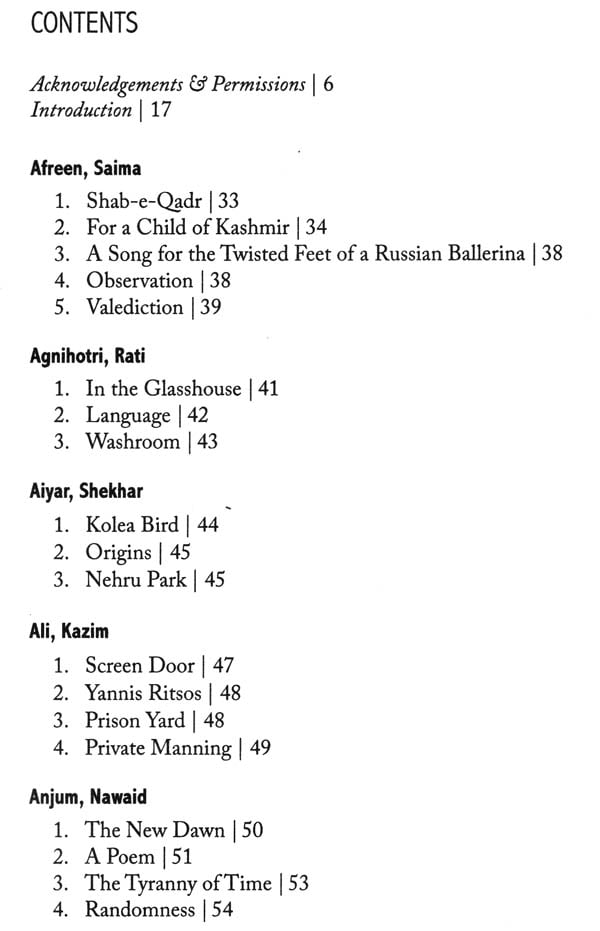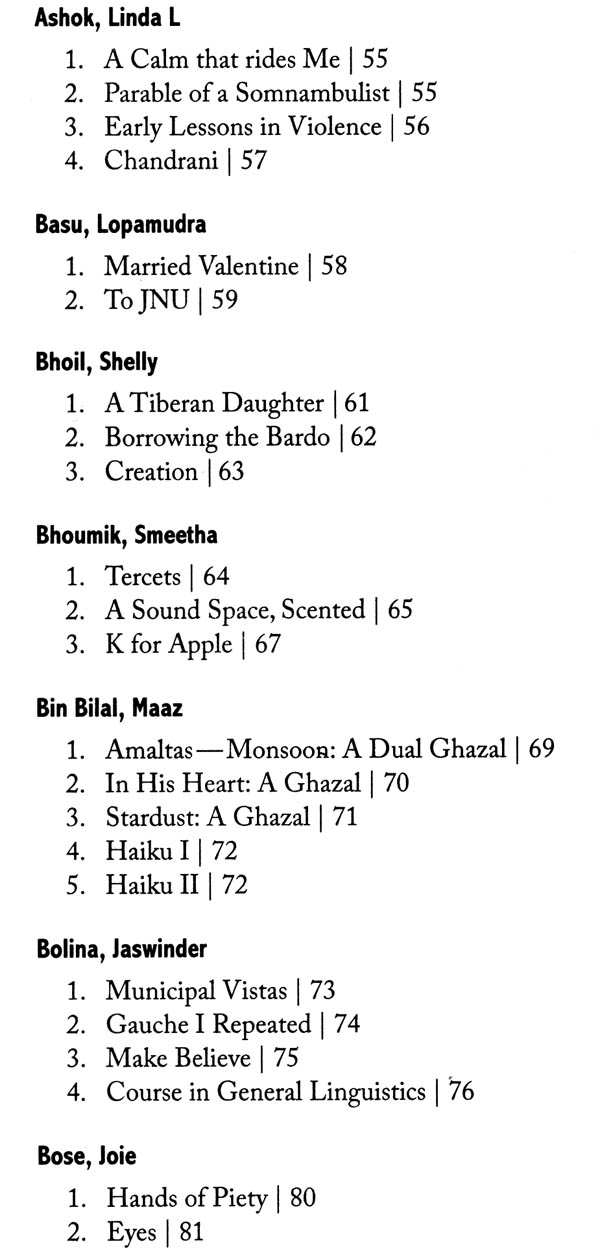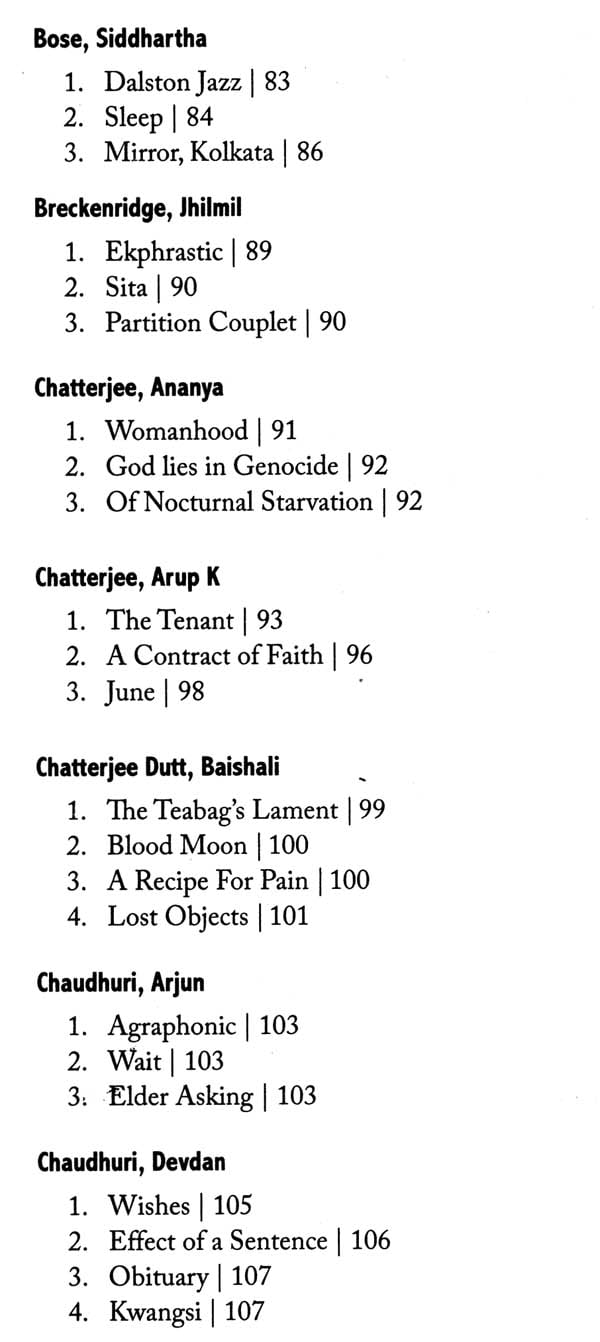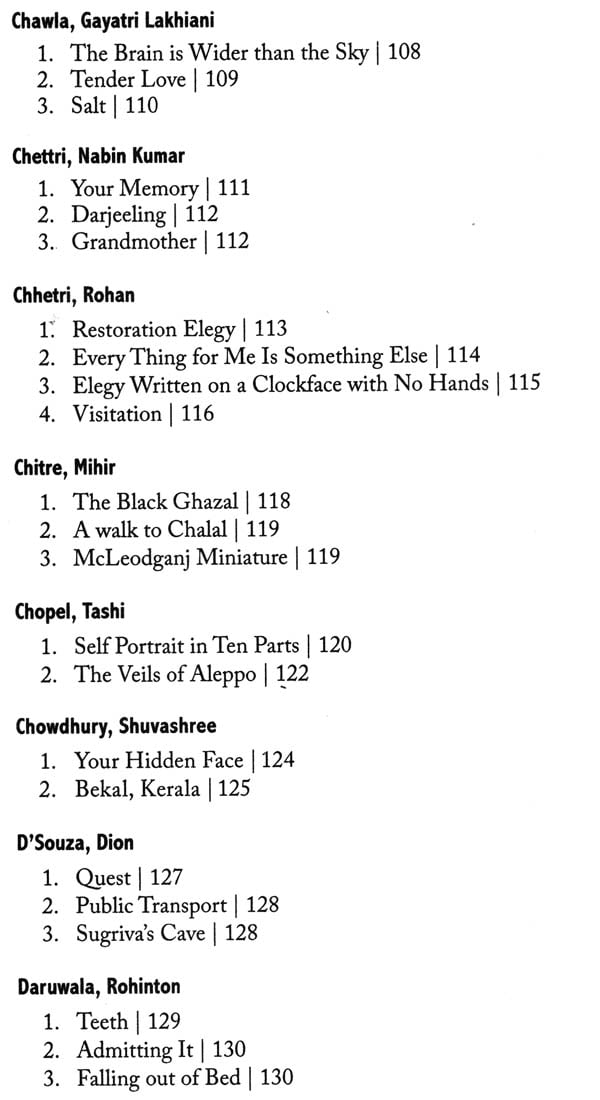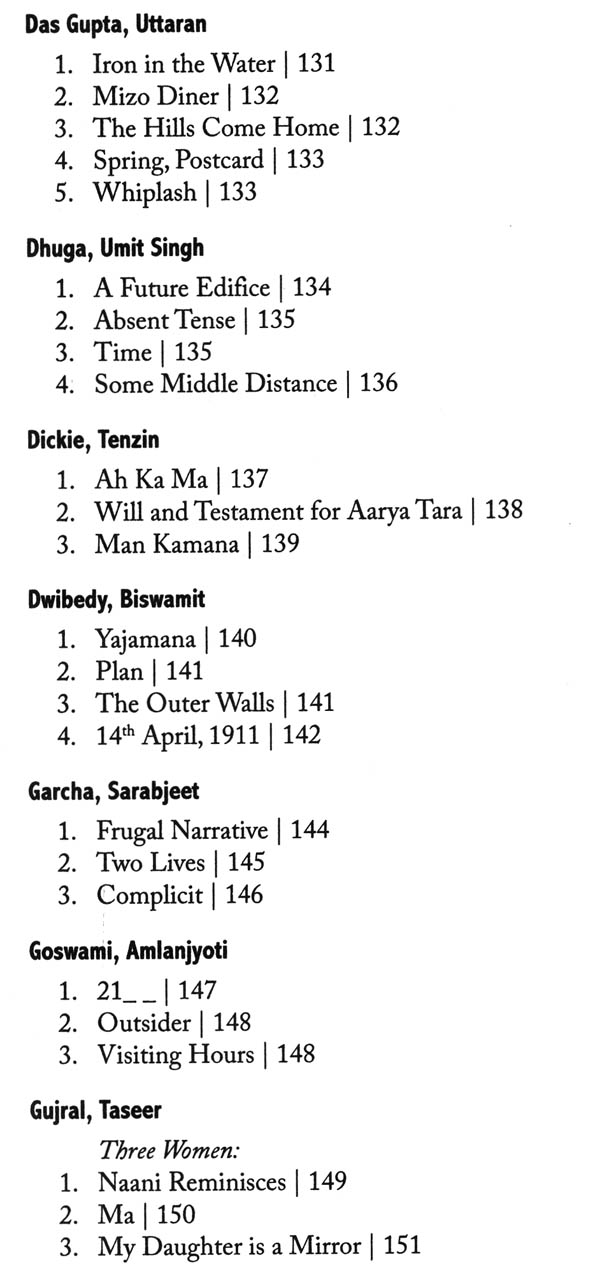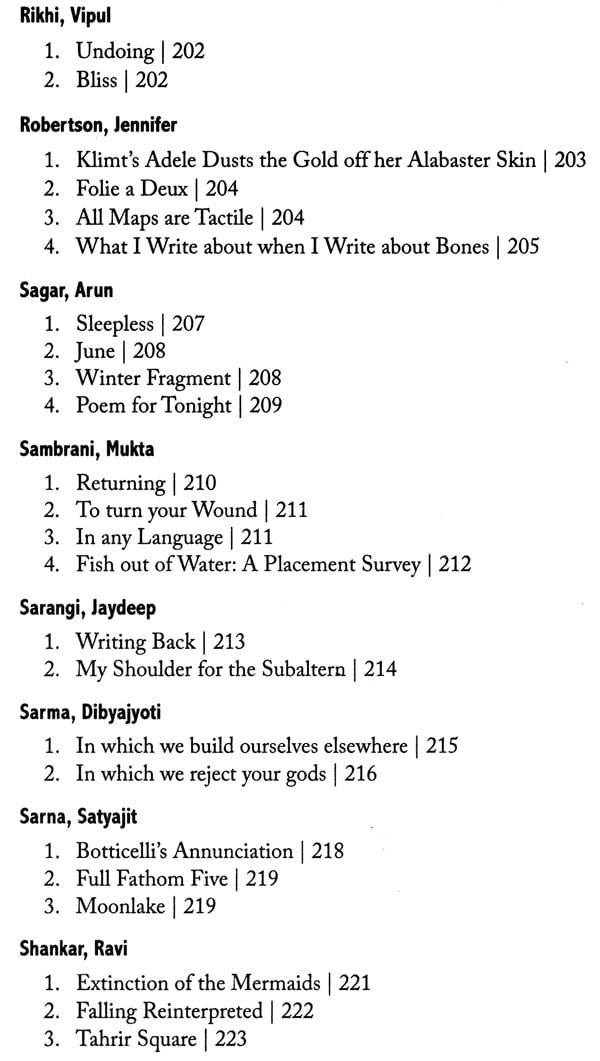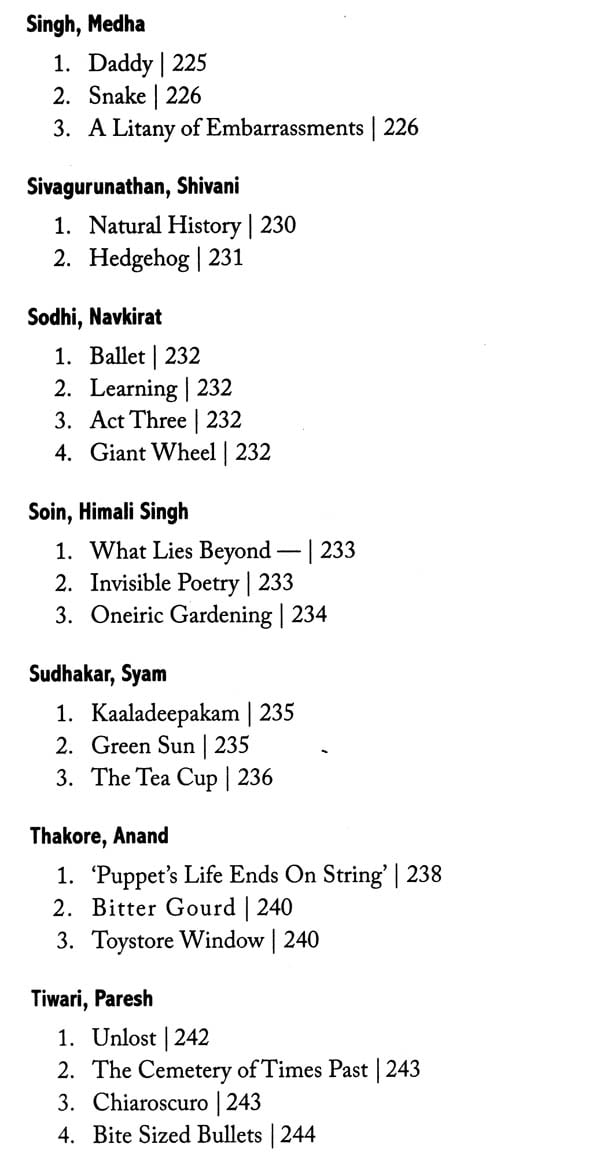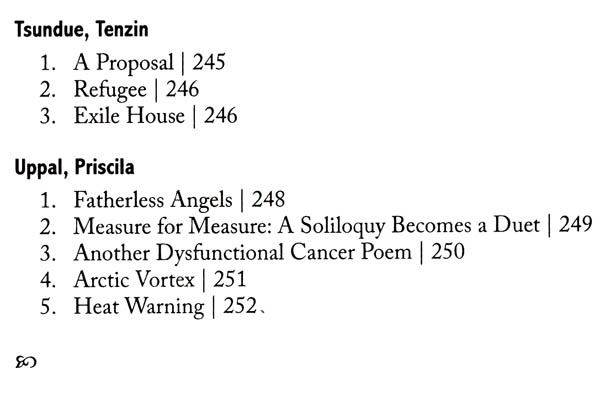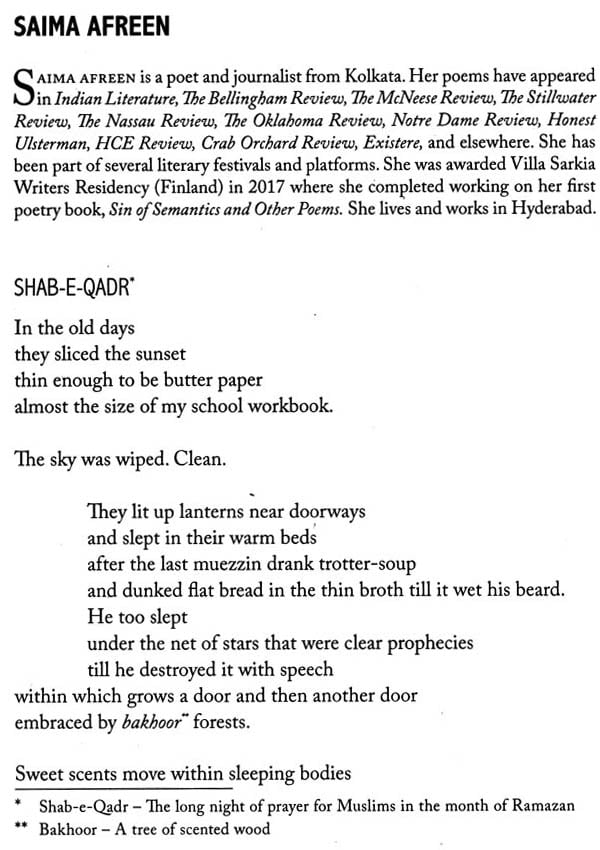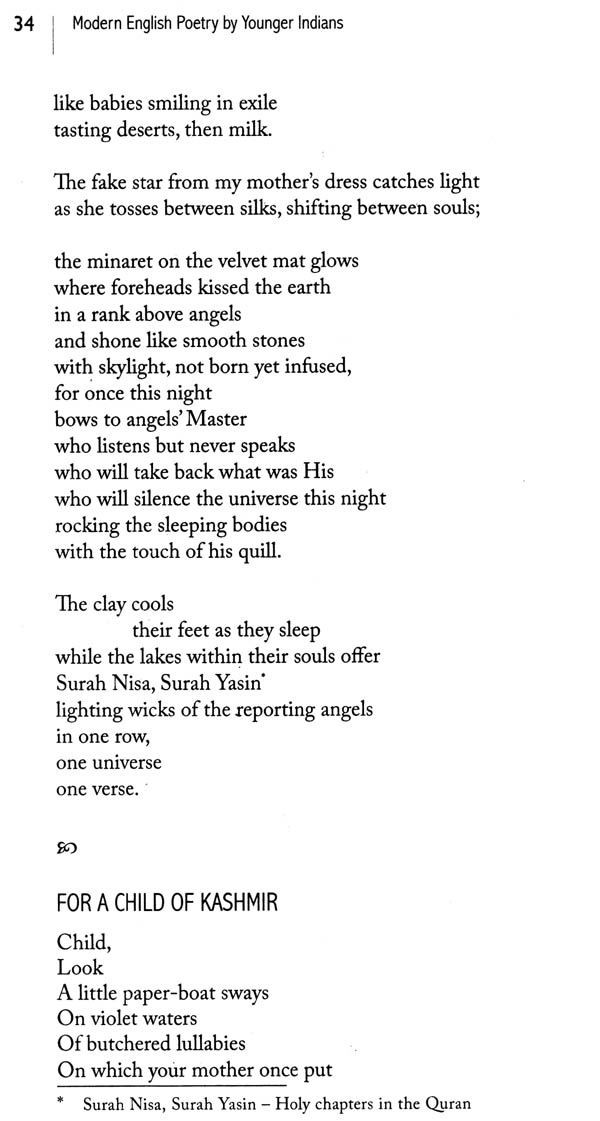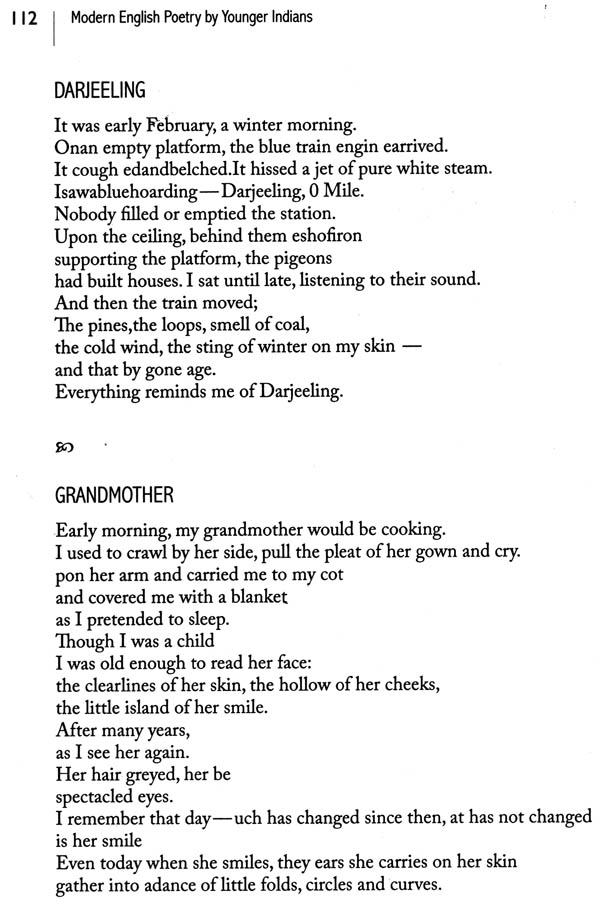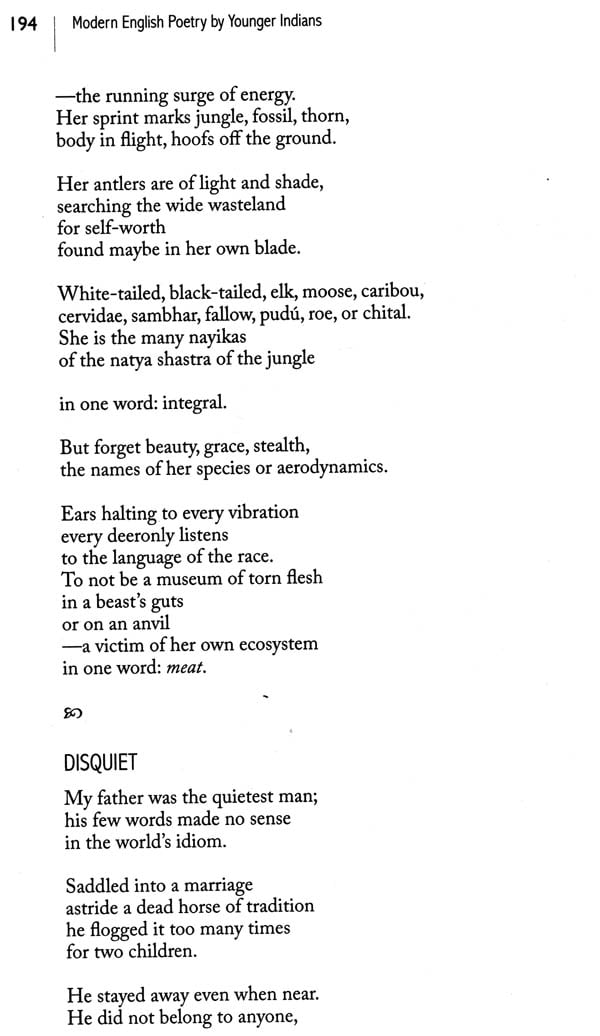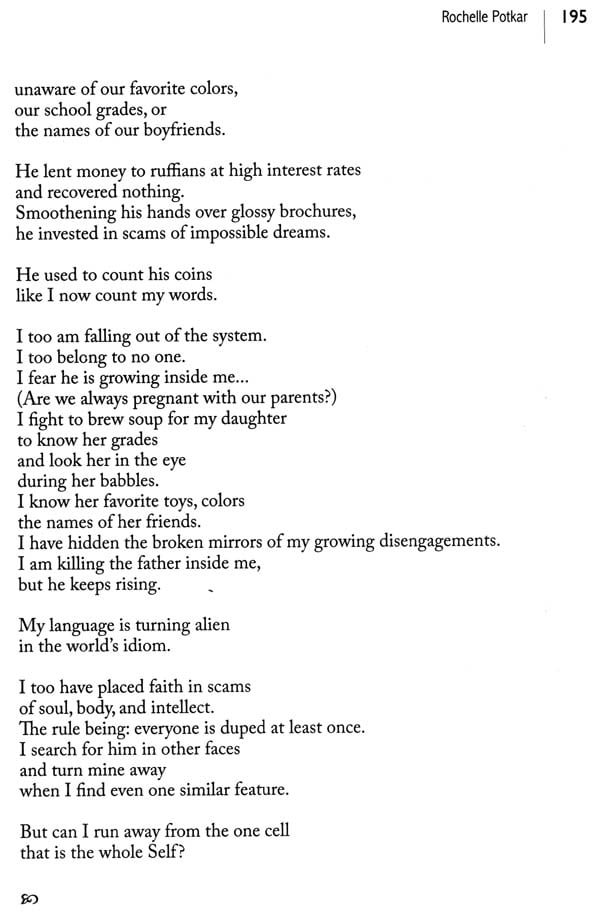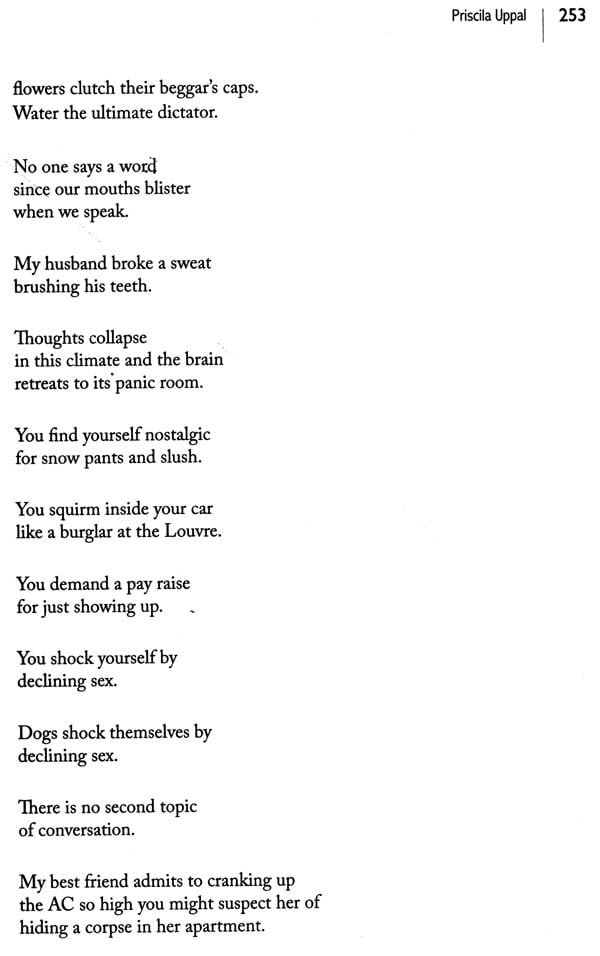
Modern English Poetry by Younger Indians
Book Specification
| Item Code: | NAU417 |
| Author: | Sudeep Sen |
| Publisher: | Sahithya Akademi, Chennai |
| Language: | English |
| Edition: | 2022 |
| ISBN: | 9789389195644 |
| Pages: | 256 |
| Cover: | HARDCOVER |
| Other Details | 9.00 X 6.00 inch |
| Weight | 440 gm |
Book Description
Modern English Poetry by Younger Indians edited by Sudeep Sen — containing nearly 70 poets — is a landmark new anthology that maps the contemporary poetry scene in India and the broader Indian diaspora.
Nearly a hundred years have passed since E V Rieu’s India in Song: Eastern Themes in English Verse by British and Indian Poets (Oxford University Press, 1920), one of the earliest known attempts to present Indian poetry in English in serious anthology form. Since then many more anthologies have appeared (including significant ones from Macmillan, Orient Longman, Oxford, Rupa, Penguin and HarperCollins), and through them one can see and map the progression of Indian poets — their trajectory, outlook, approach, innovation, language and a varied evolving style.
In the last two decades, Indian poetry in the English language has developed by leaps and bounds, following almost an algorithmic graph. New poets have emerged, employing diverse styles of writing, introducing new literary tropes, and extending the scope of the poetic muse. What marks them is their confidence — they are unafraid and outwardly political; they engage head-on with gender issues, aspects of intolerance, inequality; and their approach to language is free, open and unabashed.
Enterprising new poetry presses have been set up by poets, even as a number of quality online venues for publishing poetry have come to the fore. Poetry collectives, new platforms for performances (especially the popular spoken-word scene) have proliferated around the country. On any given day (certainly in the bigger cities), you can find poetry readings/performances in cafes, bars, art galleries, bookshops and music venues — apart from the traditional venues like universities, libraries and literary institutions. There is a healthy buzz around contemporary Indian English-language poetry as the younger poets make themselves heard.
SupeeP SEN (b. 1964) is widely recognised as a major new generation voice in world literature and "one of the finest younger English-language poets in the international literary scene" (BBC Radio). His prize-winning books include: Postmarked India: New & Selected Poems (HarperCollins), Distracted Geographies, Rain, Aria (A K Ramanujan Translation Award), The HarperCollins Book of English Poetry (editor), Fractals: New & Selected Poems | Translations 1980-2015 (London Magazine Editions), Ero/ext (Vintage: Penguin Random House), and Kaifi Azmi: Poems | Nazms (Bloomsbury). Blue Nude (Jorge Zalamea International Poetry Prize) and 7he Whispering Anklets are forthcoming. He is the editorial director of AARK ARTS and the editor of At/as. Sen is the first Asian honoured to read his poetry and deliver the Derek Walcott Lecture at the Nobel Laureate Festival. The Government of India’s Ministry of Culture has awarded him the senior fellowship for "outstanding persons in the field of culture/literature"’.
Nearly a hundred years have passed since E V Rieu’s India in Song: Eastern Themes in English Verse by British and Indian Poets (Oxford University Press, 1920), one of the earliest known attempts to present Indian poetry in English in serious anthology form. Since then many more anthologies have appeared (including significant ones from Macmillan, Orient Longman, Oxford, Rupa, Penguin and HarperCollins), and through them one can see and map the progression of Indian poets—their trajectory, outlook, approach, innovation, language and a varied evolving style. In the early years, Indian verse in English tended to be imitative, almost Victorian in usage. Then came the use of Indianism in English poetry that emerged out of India. Barring a few exceptions, it was really not until the late 1900s that Indian poets wrote as if English was one of their own mother tongues.
In the last two decades, Indian poetry in the English language has developed by leaps and bounds, following almost an algorithmic graph. New poets have emerged, employing diverse styles of writing, introducing new literary tropes, and extending the scope of the poetic muse. What marks them is their confidence—they are unafraid and outwardly political; they engage head-on with gender issues, aspects of intolerance, inequality; and their approach to language is free, open and unabashed.
Enterprising new poetry presses have been set up by poets, even as a number of quality online venues for publishing poetry have come to the fore. Poetry collectives, new platforms for performances (especially the popular spoken-word scene) have proliferated around the country. On any given day (certainly in the bigger cities), you can find poetry readings/performances in cafes, bars, art galleries, bookshops and music venues—apart from the traditional venues like universities, libraries and literary institutions. There is a healthy buzz around contemporary Indian poetry as the younger poets make themselves heard.
